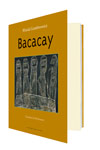Every year our literary tastemakers unearth another fossilized giant of European letters and cause the veteran review-section pundits to wag their bony, liver-spotted fingers at upstarts like me until we cave in and read him. And I am a total sucker. When I heard that someone planned to finally release Witold Gombrowicz’s story collection Bacacay in English I damn near crapped my pants. Then I spent an entire month singing Michael Chabon’s line from Wonder Boys, “What’s that, Gombrowicz?” to the tune of Tom Jones’s “What’s New, Pussycat?” and trying to figure out why this guy— Gombrowicz, not Chabon—isn’t better known.
Though born in Poland, Gombrowicz lived most of his life in self-imposed exile after government officials banned his books, this one included, for their subversiveness. Given the obscurity and perceived difficulty of his oeuvre, he is literature’s white whale, Rosebud, and Bigfoot combined. Bacacay contains the first stories he published. They are elusive and frequently downright cruel; they don’t mean anything, they just are. But exactly what they are can’t be defined with any precision, except to say that Gombrowicz regularly toys with the elasticity of realism, stretching it as far as it will go before snapping it back. He grounded these twelve tales in reality, yes, but it’s the same freedom- is-slavery reality of post-WWI Eastern Europe that led to the rise of fascism.
The macabre humor lurks close to the surface. “A Premeditated Crime” reads like a Kafka allegory told from the other side of the law. “[M]ost of my fellow magistrates would have closed the investigation. But not I! I was too ridiculed, too vengeful, and I had already ventured too far. I raised my finger and frowned. ‘A crime does not come of its own accord, gentlemen; it must be worked upon mentally, thought through, thought up—dumplings don’t cook themselves.’” In “Dinner at Countess Pavahoke’s” a peasant boy named Cauliflower goes missing shortly before a snooty, supposedly vegetarian feast, while “The Events on the Banbury” features a group of sailors who to amuse themselves invent “a game that involves one of them catching a second unawares and trying to poke the other man’s eye out with his thumb.” In detailing a retired judge’s efforts to torture and subsequently civilize the local ruffian, “The Rat” manages to evoke both Bartók’s opera “Bluebeard’s Castle” and the nastiest scenes in 1984:
And all the time—the rat.
Without a break—the rat.
Only—the rat.
The rat, and the rat, and the rat.
These are as weird and wonderful and erudite as anything by Borges or Joyce, yet almost no one reads Gombrowicz and to do so is to join an exclusive and ultimately meaningless club, like people who’ve had sex on airplanes or shot a hole in one. It’s safe to think of Bacacay as Gombrowicz’s Dubliners: a collection of complex and sophisticated short stories that contain within them all the seeds of the author’s later artistic blooming. But these aren’t just gateway drugs, the kind that will lead you to bigger and harder stuff like his novel Ferdydurke or three-volume Diary. They will do that, sure, but not before reminding you what great literature is capable of. These stories don’t settle for mere entertainment but instead prod and engage at every turn of phrase and provide vast new vocabularies with which to describe the absurdity of everyday life.





